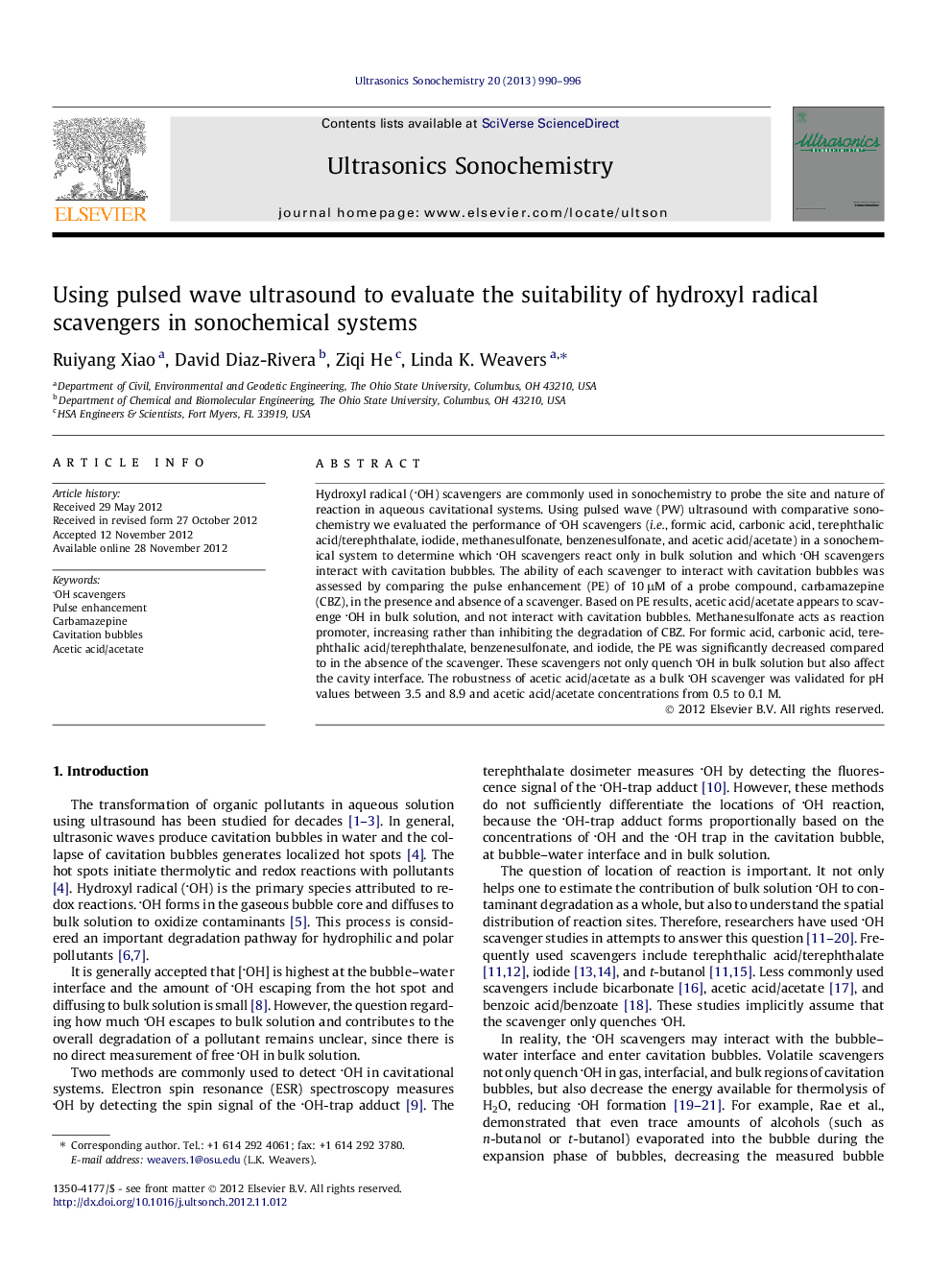| Article ID | Journal | Published Year | Pages | File Type |
|---|---|---|---|---|
| 1265287 | Ultrasonics Sonochemistry | 2013 | 7 Pages |
Hydroxyl radical (OH) scavengers are commonly used in sonochemistry to probe the site and nature of reaction in aqueous cavitational systems. Using pulsed wave (PW) ultrasound with comparative sonochemistry we evaluated the performance of OH scavengers (i.e., formic acid, carbonic acid, terephthalic acid/terephthalate, iodide, methanesulfonate, benzenesulfonate, and acetic acid/acetate) in a sonochemical system to determine which OH scavengers react only in bulk solution and which OH scavengers interact with cavitation bubbles. The ability of each scavenger to interact with cavitation bubbles was assessed by comparing the pulse enhancement (PE) of 10 μM of a probe compound, carbamazepine (CBZ), in the presence and absence of a scavenger. Based on PE results, acetic acid/acetate appears to scavenge OH in bulk solution, and not interact with cavitation bubbles. Methanesulfonate acts as reaction promoter, increasing rather than inhibiting the degradation of CBZ. For formic acid, carbonic acid, terephthalic acid/terephthalate, benzenesulfonate, and iodide, the PE was significantly decreased compared to in the absence of the scavenger. These scavengers not only quench OH in bulk solution but also affect the cavity interface. The robustness of acetic acid/acetate as a bulk OH scavenger was validated for pH values between 3.5 and 8.9 and acetic acid/acetate concentrations from 0.5 to 0.1 M.
► Pulsed wave ultrasound was used to evaluate the performance of OH scavengers. ► Acetic acid/acetate is a bulk OH scavenger. ► The robustness of acetic acid/acetate was validated at different pH and concentrations.
